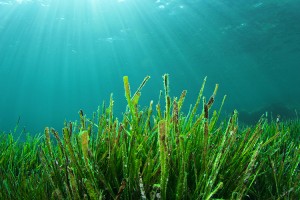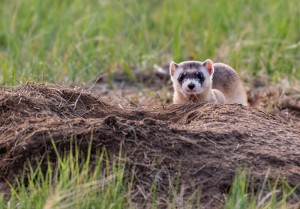Shark Bay’s Monster Meadow
Thursday, July 7th, 2022The world’s largest living thing has been hiding beneath the waves of Australia’s Shark Bay for thousands of years. But it is not some giant shark or other ancient nightmare—it is a patch of sea grass the size of a city.
Sea grass is a flowering ocean plant that somewhat resembles grass on land. It even forms large underwater meadows. Sea grass is different from seaweed, which is actually a type of algae.
Sprawling sea grass meadows carpet the bottom of Shark Bay, off the Western Coast of Australia. They serve as a habitat for fishes and other animals and grazing pasture for manatee-like dugongs. Recently, scientists conducting genetic studies of these meadows made a startling discovery.
The scientists, from the University of Western Australia, discovered that vast patches of Shark Bay sea grass are all clones of a single individual. Clones are offspring that are genetically identical to their parents. Sea grass clones itself by growing shoots from its root system that develop into new plants. These plants are capable of surviving on their own, but often remain interconnected. In many ways, the meadows function as a single individual—the largest organism (living thing) on Earth.
Similar discoveries have been made on land. In Utah, a colony of quaking aspen trees known as Pando shares a genetic identity and underground root system. The result is a single organism covering just over 100 acres (40 hectares) of land. A similar colony of mushrooms, known as the Humongous Fungus, covers more than 2,000 acres (800 hectares) in Oregon. Shark Bay’s monster meadow dwarfs these landlubbers at a staggering 50,000 acres (20,000 hectares). That’s about the size of the city of Cincinnati, Ohio.
Evidence suggests that the sweeping swath of sea grass is some 4,500 years old. The plant’s genetic makeup may hold the key to its longevity. The species, known as Poseidon’s ribbon weed, is actually a hybrid of two other plants, and it has two complete sets of genes. Such a condition, a form of polyploidy, is generally deadly in animals. But it can be harmless in plants or even beneficial. Scientists think that all those extra genes may have given the ribbon weed the genetic resources necessary to survive thousands of years of changing climate.
However, there’s no guarantee that the gargantuan grassland will continue to survive. Global warming is raising the temperature of Earth’s oceans, posing a threat to virtually every organism living there. Sea grass meadows may be a particular point of concern because, like coral reefs, they provide habitat for a wide variety of species, making them hotbeds of biodiversity (the diversity of living things).




